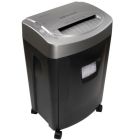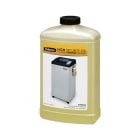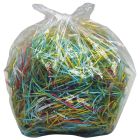A Brief Glossary of Paper Shredder Terms
Using a paper shredder has become a necessity in a world that's plagued by identity theft and under the rule of federal privacy laws. While using the shredders themselves isn't very difficult, getting used to some of the terminology associated with these machines can be a challenge, especially if you haven't shredded before. This brief glossary will enable you to get familiar with such terms as "cabinet," "continuous-duty motor," and "strip-cut," so keep reading and get ready to learn more about shredders!
Automatic oiler. An apparatus that will oil your shredder automatically. These are typically only found on larger units with continuous-duty motors.
Automatic on/off. Some machines have an automatic on/off feature. This means the device can detect when there's paper in the throat. It will turn itself on automatically and then shut down after the item has been shredded.
Bin full indicator. An indicator that will let you know when the waste bin needs to be emptied. This is sometimes referred to as a "bag full indicator."
Cabinet. The area of the machine the stores the wastebasket.
Cardboard shredder. A device that has the ability to shred cardboard.
Casters. Wheels located on the bottom of a device. Casters make it easier to move a machine around, especially when it weighs a lot.
Continuous-duty motor. A continuous-duty motor is capable of running non-stop. These motors are frequently found in departmental shredders.
Cross-cut. A shredding style in which paper is cut two ways. Cross-cut devices offer more security than strip-cut ones because they turn paper into tiny pieces as opposed to strips that can be reassembled.
Multimedia shredder. A machine that is capable of shredding items other than paper such as CD's, floppy disks, and other electronic media. Most multimedia units have the ability to shred paper, but some do not.
Overfeed indicator. A part of the device that either beeps or illuminates when too much paper is inserted. This allows you to remove the excess sheets to prevent a jam from occurring.
Reverse mode. A feature that makes the paper back out of the machine. This feature is especially handy if you experience a jam.
Safety features. Attributes of a device that make it safe to use, such as the ability to shut down immediately if hands are too close to the feed opening.
Security level. The amount of security a machine has to offer. There are six levels of security, with 1 offering the least and 6 offering the most. Machines with a Level 6 rating are usually approved for use by government agencies, the military, and other organizations that deal with highly classified data.
Shredding capacity. The amount of material a machine can shred at once. Machines with larger shredding capacities are better for bigger offices.
Strip-cut. This is probably the most common kind of shredder. It will turn a document into countless spaghetti-like strips. It offers less security than the cross-cut style.
Throat. The area in which you place your documents and/or media for shredding. Throats vary in width. This is also known as a feed opening.
Waste bin. Also known as a wastebasket, this is where your materials go after they've been shredded. Waste bins are sometimes lined with plastic bags so it's easier to dispose of the shreds.









